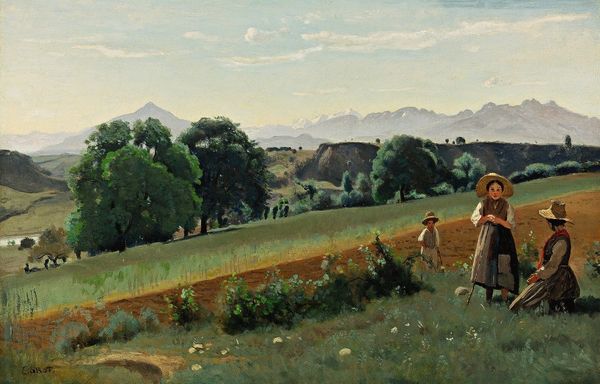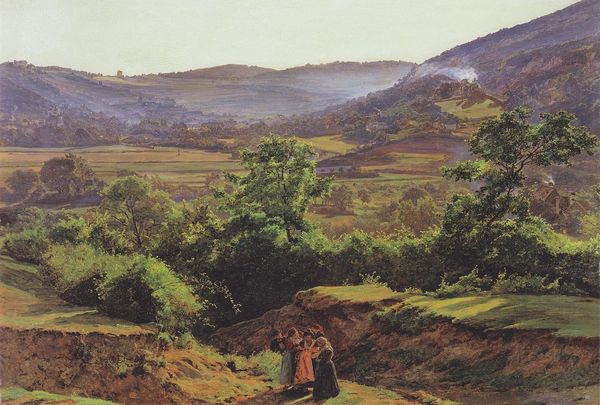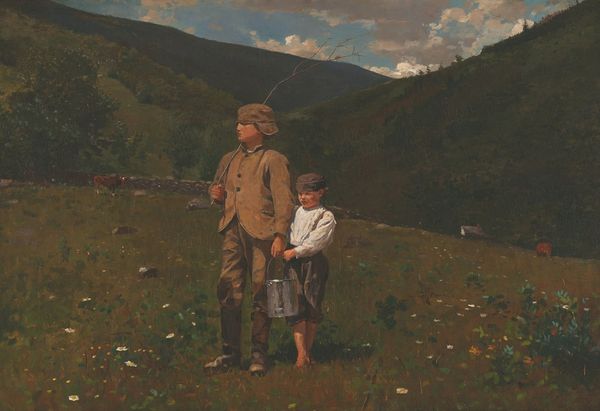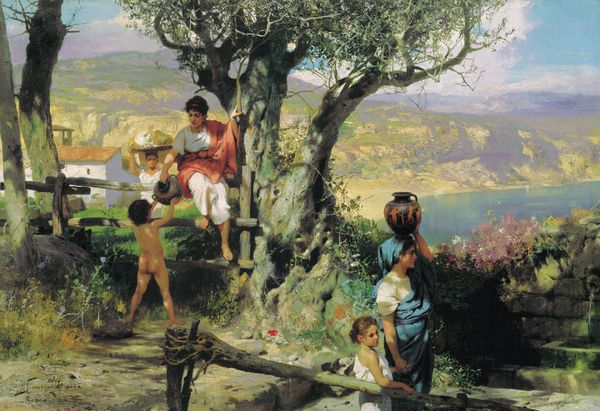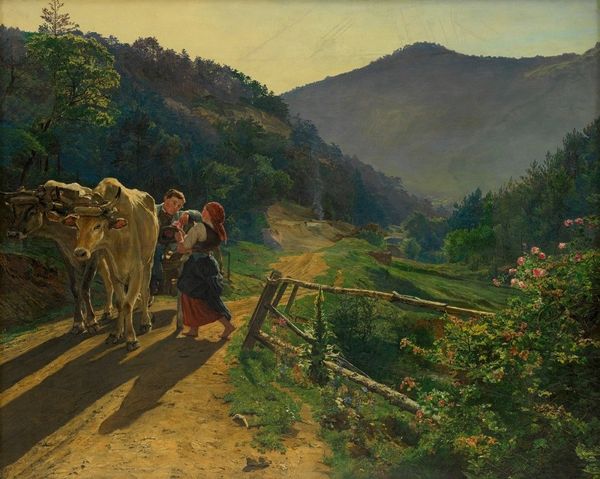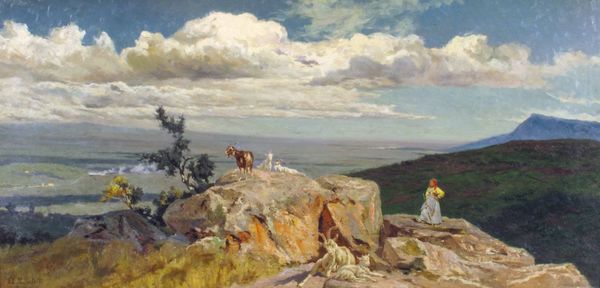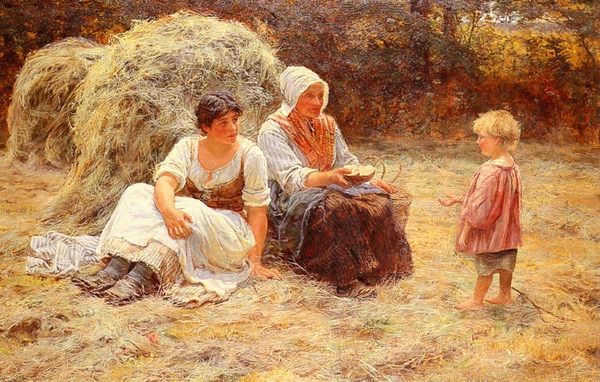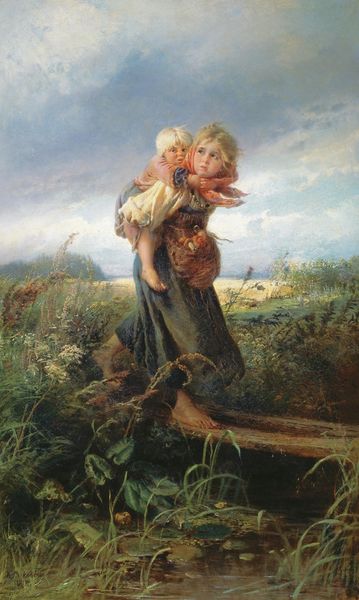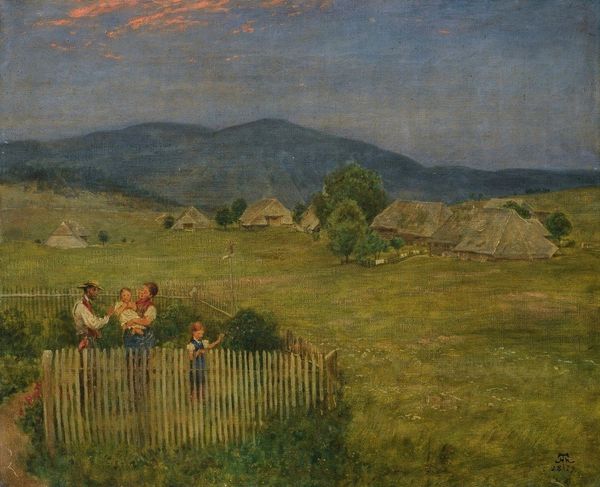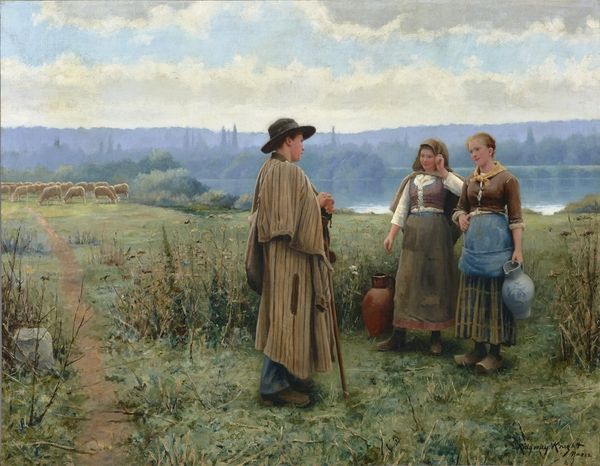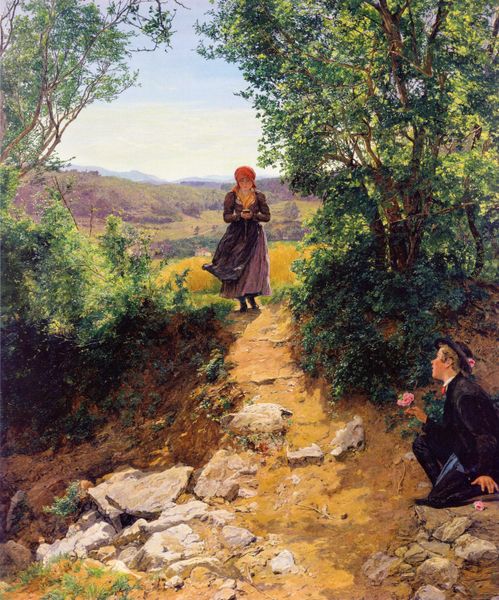
oil-paint
#
grass
#
oil-paint
#
landscape
#
figuration
#
oil painting
#
genre-painting
#
academic-art
#
naturalism
#
realism
Copyright: Public domain
Editor: This is "The Gleaners" by Eugène Burnand, painted in 1900. It’s an oil painting depicting two women gathering wheat in a field, set against a vast landscape. There’s a certain stillness to it, almost like a memory. What can you tell me about it? Curator: Indeed. Burnand captures a moment imbued with deeper meaning. Notice how the golden hues dominate, almost religiously recalling the promise of harvest, of sustenance, echoing age-old agrarian cycles central to human survival. Editor: So the golden colour represents this idea of a life cycle? Curator: Partially. The field isn’t merely a field; it's an archetypal representation of labour, survival, and the human connection to nature. Do you see how the women are positioned low in the frame? It’s not accidental. It tells us something about their societal place, or perhaps Burnand is commenting on their relationship with the land. Editor: You're right. There is something about their downcast gazes that imply toil and labor. Almost somber. Curator: Precisely! And even the bundles of wheat they hold aren’t simply props, no. They’re symbols of what’s salvaged, a reward for their work, but also reminders of a cycle repeating. Are they blessed? Or burdened? Editor: It's fascinating how the symbolism embedded within the imagery really encourages consideration beyond just the literal scene. I am struck by that solemness, especially with such a vivid pastoral scene, like it holds a multitude of cultural meanings. Curator: Exactly, the art serves as an artifact of continuity, showing enduring, though perhaps now-forgotten, connections between labor, land, and legacy. A memory indeed.
Comments
No comments
Be the first to comment and join the conversation on the ultimate creative platform.
